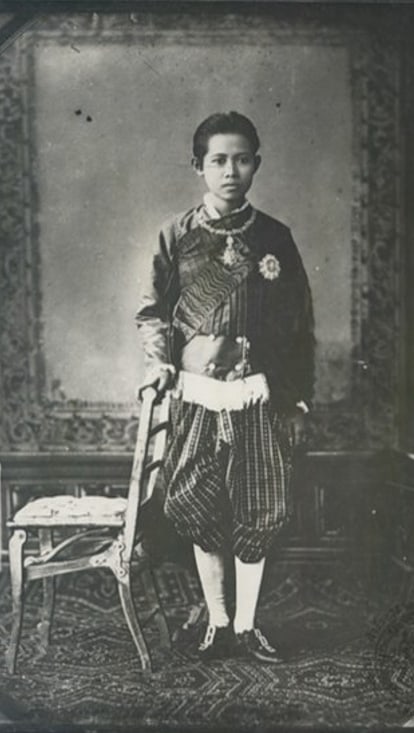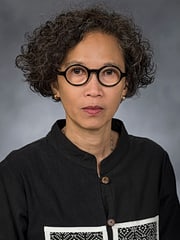Announcement: 14.06.2025 – Hybrid Lecture by Prof. emer. Dr. M.L. Pattaratorn Chirapravati: "Royal Fashions: Reflections on Modernizing the Image of Siamese Women in the Late Nineteenth Century to the Present"
14 June 2025, 10:00 am, by AAI Webmaster

Photo: Pattaratorn Chirapravati, cropped
We kindly invite you to this hybrid (online and in-site) lecture in English language on Saturday, June 14th, 2025, at 10:00–11:00 h (CEST/MESZ).
Topic:
"Royal Fashions: Reflections on Modernizing the Image of Siamese Women in the Late Nineteenth Century to the Present"
Speaker:
Prof. emer. Dr. M.L. Pattaratorn Chirapravati
Affiliation:
Asian Studies Program at California State University, Sacramento
Date/Time:
June 14th, 2025 (Saturday), 10:00 – 11:00 (CEST/MESZ)
Language:
English
Place:
University of Hamburg
Asia-Africa-Institute (AAI)
Edmund-Siemers-Allee 1, Ostflügel (East Wing"), room O-221
20146 Hamburg
Zoom Link:
https://uni-hamburg.zoom.us/j/66286342348?pwd=5jDMlYozI3qMVBbDWhtDxxLGgZLgU6.1
Zoom Meeting-ID:
662 8634 2348
Zoom Passcode:
72093402

About this lecture:
Clothing and politics, when combined, serve as a powerful tool for redefining national identity. In preparation for Their Majesties' 1960 World Tour, Queen Sirikit of Thailand assembled an advisory team to design new national costumes, blending historical court dress with modern Western tailoring. Five distinct styles were created for her trip, later expanded to eight, and remain in use today. These designs, rooted in honoring tradition while promoting a modern Thai identity, deliberately avoided merely copying Western fashion.
Historically, similar strategies appeared during King Chulalongkorn's reign (1868–1910) as Siam resisted Western colonization. Both the king and his queens projected a modernized image of Siam through reforms and by adopting contemporary European dress. Royal women developed hybrid attire that fused traditional Siamese textiles with European garments, thereby using fashion as a diplomatic tool.
This paper examines the sartorial contributions of two chief queens of King Chulalongkorn as well as Queen Sirikit's enduring National Dress styles. Each queen’s fashion reflected her perspective on women's rights and roles and elevated traditional Siamese textiles internationally. Queen Sawang Vadhana fostered hand-weaving in the royal court, while Queen Saovabha Phongsri, the first female regent, paired hybrid dress with political authority. Queen Sirikit later championed traditional textiles, culminating in the Queen Sirikit Museum of Textiles (opened 2003). Collectively, their efforts promoted Thai cultural identity, making traditional clothing accessible and popular across classes.

Brief profile:
M.L. Pattaratorn Chirapravati is an art historian specializing in Buddhist art and Southeast Asian visual cultures. She has published extensively on Buddhist art, including Votive Tablets in Thailand: Origin, Styles, and Uses (1997) and Divination Au Royaume de Siam: Le corps, la guerre, le destin (2011). She is emerita professor of art history and former Director of the Asian Studies Program at California State University, Sacramento. She was Head of Studies, Division of Arts and Humanities at Yale-NUS College (Singapore, 2016–2018), and Joint Visiting Professor at Nanyang Technological University (2022–2024). She co-curated two major exhibitions with Dr. Forrest McGill at the Asian Art Museum of San Francisco: The Kingdom of Siam: Art from Central Thailand (1530–1800) (2005) and Emerald Cities: Arts of Siam and Burma (1775–1950) (2009). She currently serves as Honorary Editor of the Journal of Siam Society (Bangkok).
We would like to thank the Hamburg Society for Thai Studies for the cooperation.
You can also find all this information on our Instagram account and on our flyer.


